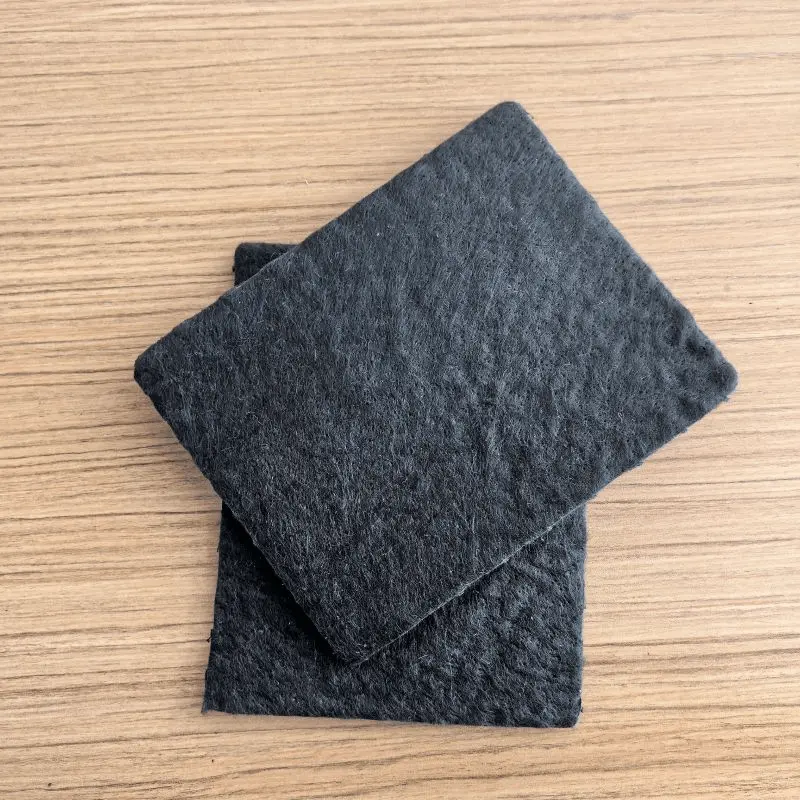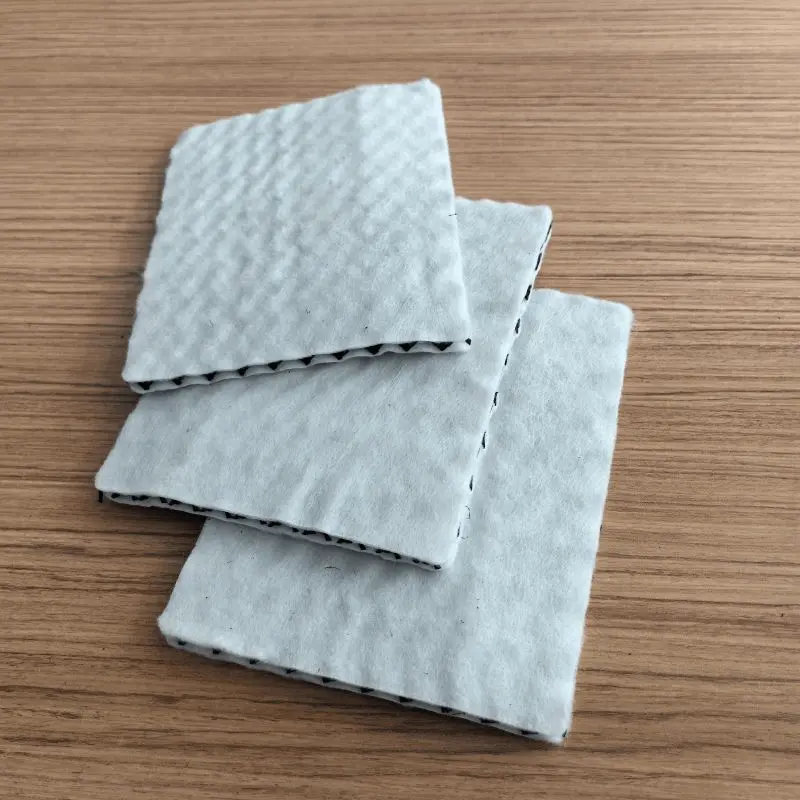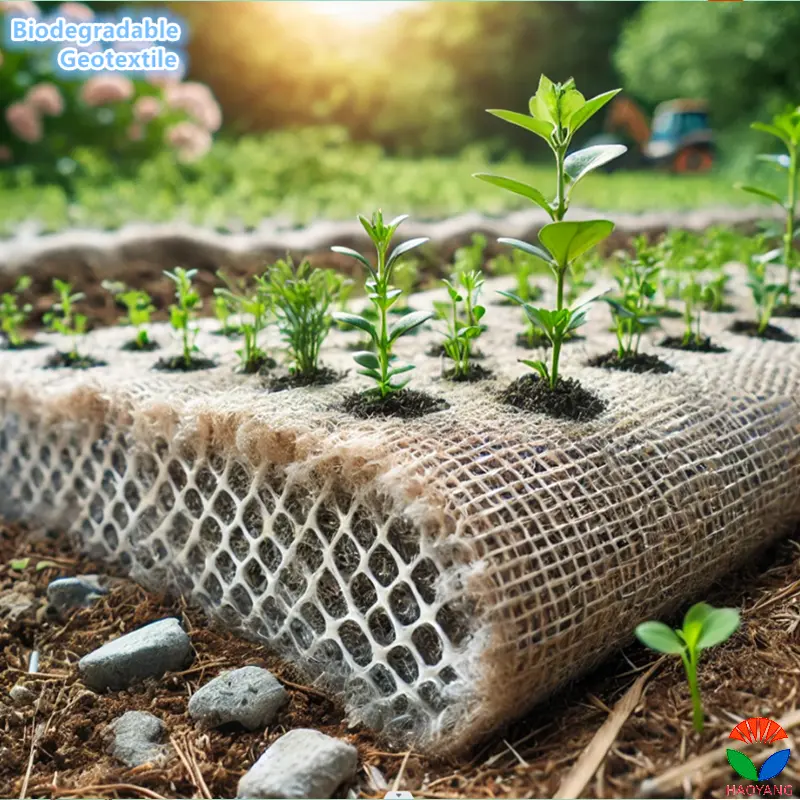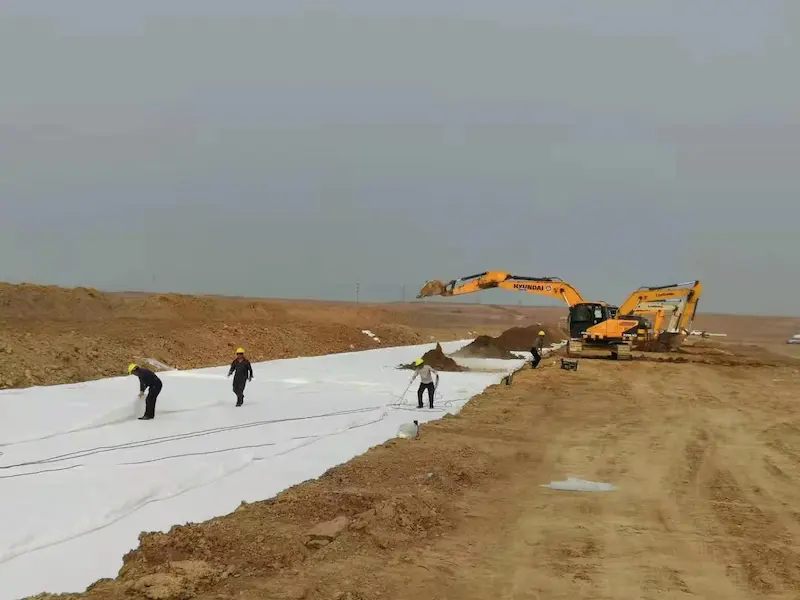Geosynthetics in geotechnical engineering: A Legendary Story of Engineering Transformation
Nestled in the embrace of towering mountains, a small town was traversed by a winding river, painting a harmonious picture of nature and humanity. However, with the growth of the economy and population, the town's infrastructure faced immense challenges. Particularly along the riverbank, plans were afoot to construct a large-scale water conservancy project for power generation and irrigation, aimed at supporting the town's future prosperity.
Traditional civil engineering materials like sand, gravel, and concrete, while reliable, were environmentally destructive to extract and use. Additionally, their construction processes were lengthy and costly. This posed a dilemma for the town's engineers, who desperately sought a newer, more efficient, and environmentally friendly building material to address this issue.
At this juncture, a young engineer named Li Ming arrived in the town, accompanied by his team and a revolutionary material known as geosynthetics. Li Ming had studied extensively in top civil engineering institutions both domestically and internationally, and he possessed profound knowledge of geosynthetics. Deeply aware of their exceptional performance in soil reinforcement, drainage, and seepage prevention, he firmly believed that these materials could solve the town's current predicament.
Li Ming and his team embarked on a detailed survey and design, determining the specific plan for the water conservancy project and the application of geosynthetics. They utilized geogrids to reinforce the soil along the riverbank, preventing soil erosion. Geomembranes were employed to construct an anti-seepage system, ensuring the safety of the reservoir. Simultaneously, they utilized geotextiles to establish a drainage network, guaranteeing the smooth operation of the water conservancy project.
During the construction process, the advantages of geosynthetics gradually became apparent. Compared to traditional materials, they were lightweight and easy to transport, significantly reducing the construction period. Furthermore, due to their environmental friendliness, the construction site was effectively protected, minimizing the impact on the surrounding ecology.
After several months of intense construction, the water conservancy project was successfully completed. As the gate of the reservoir slowly opened, releasing a torrent of clear water, the residents of the town cheered loudly, celebrating the triumph of this engineering transformation.
Li Ming and his team emerged as leaders in the civil engineering field due to this successful endeavor. Their story spread throughout the industry, leading to the widespread promotion and application of geosynthetics globally.
This legendary story of engineering transformation not only demonstrates the immense potential of geosynthetics in geotechnical engineering but also showcases the power of technology and the charm of innovation. Although the names are fictional, the story is authentic. In the future, we believe that with the efforts of more engineers like Li Ming, geosynthetics will bring even more surprises and breakthroughs to the field of civil engineering.
Types of Geosynthetics
Geosynthetics refer to synthetic materials engineered for use in geotechnical applications. They are categorized into several main types:
Geotextiles: These permeable fabrics are commonly used for filtration, drainage, separation, and reinforcement. Geotextiles provide soil stabilization and erosion control while allowing water to pass through, making them essential in various civil engineering projects such as road construction, embankments, and retaining walls.
Geogrids: Geogrids are grid-like structures composed of polymers, fiberglass, or steel, designed to provide tensile reinforcement in soil. They are used to enhance the stability of slopes, reinforce retaining walls, and improve the bearing capacity of foundations by distributing loads over a wider area.
Geomembranes: Impermeable membranes made of synthetic polymers, geomembranes are utilized for containment applications such as lining landfills, ponds, and reservoirs. They prevent the migration of liquids or gases, thus protecting the environment from contamination.
Geocomposites: Geocomposites are hybrid materials combining two or more types of geosynthetics to achieve specific engineering objectives. Examples include geotextile-geogrid composites used for roadway stabilization and drainage, and geotextile-geomembrane composites employed in landfill liners.
Functions and Applications
Geosynthetics serve diverse functions in geotechnical engineering, including:
Reinforcement: Geosynthetics improve the mechanical properties of soil by distributing applied loads, reducing settlements, and increasing stability. They are extensively used in the construction of retaining walls, embankments, and reinforced slopes.
Separation: Geotextiles prevent the intermixing of dissimilar soil layers, providing a stable platform for construction by separating aggregate materials from underlying soils. This function is vital in pavement systems, railroad ballasts, and drainage systems.
Filtration and Drainage: Geotextiles act as filters, allowing water to pass while retaining soil particles. They facilitate efficient drainage, preventing the buildup of hydrostatic pressure and ensuring the long-term stability of structures such as retaining walls, dams, and landfills.
Erosion Control: Geosynthetics play a crucial role in erosion control measures, stabilizing slopes, riverbanks, and shorelines against the erosive forces of water and wind. They mitigate soil erosion, protect vegetation, and preserve the integrity of coastal and riverine environments.
Impact on Infrastructure Development
The widespread adoption of geosynthetics has revolutionized geotechnical engineering practices and significantly impacted infrastructure development worldwide:
Cost Efficiency: Geosynthetics offer cost-effective solutions compared to traditional methods, reducing construction time, labor, and material requirements. They enable the construction of durable, high-performance structures at lower overall costs.
Sustainability: Geosynthetics contribute to sustainable development by minimizing environmental impacts, conserving natural resources, and enhancing the longevity of infrastructure. Their use in erosion control, soil stabilization, and waste containment promotes environmental stewardship and resilience.
Versatility: Geosynthetics are adaptable to various soil conditions and engineering challenges, offering flexible solutions for a wide range of applications. Their versatility allows engineers to tackle complex geotechnical problems efficiently and innovate in infrastructure design and construction.
Geosynthetics have become indispensable components of modern geotechnical engineering, offering versatile solutions for soil stabilization, erosion control, and containment applications. Their widespread adoption has transformed construction practices, enabling cost-effective, sustainable infrastructure development worldwide. As the field continues to evolve, geosynthetics will play an increasingly vital role in addressing the challenges of urbanization, climate change, and environmental sustainability in the 21st century.


423.webp)
734.webp)

630.webp)
503.webp)
759.webp)

628.webp)
